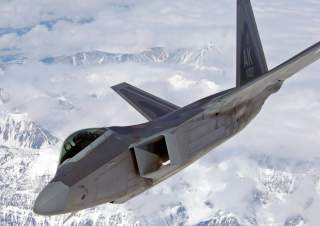Unstealthed: This Is How Easily the F-22 Can Lose Its Radar-Absorbing Coating
A huge problem?
Indeed this is not the first problem experienced by the F-22’s radar-absorbing coating: according to Southfront.org in 2009 US pilots complained that the coating easily erased from Raptor’s body during contact with fuel and lubricating oil.
The U.S. Air Force (USAF) F-22 Raptor stealth fighters, which are taking part in military operation in Syria, have started to lose their radar-absorbing coating.
As reported by Aviation Week in fact the radar-absorbing coating, that hides the Raptor from radars, warped and started to peel off. According to the USAF one of the reasons of this problem are climatic conditions affecting the area of operations.
A claim confirmed by John Cottam, head of the F-22 program of Lockheed Martin, who noted that external factors, such as rain and sand dust, not only wrinkle and peel off the coating but also turn it into its original liquid state.
Indeed this is not the first problem experienced by the F-22’s radar-absorbing coating: according to Southfront.org in 2009 US pilots complained that the coating easily erased from Raptor’s body during contact with fuel and lubricating oil.
However Lockheed Martin claims that has developed a new, more resistant coating which will be applied to all F-22s during maintenance operations. According to preliminary estimates, this process will take at least three years.
Noteworthy this is not the first issue that compromises the Raptor’s stealthiness: as we have recently reported in fact a re-occurring weapon’s system issue that affected the radar cross-section of an F-22 Raptor belonging to 43rd Fighter Squadron from Tyndall Air Force Base (AFB), Florida, has been fixed last month by means of cost-effective solution developed a 23-year-old Airman.
A cost effective solution on which the U.S. Air Force will rely very unlikely to overcome this new problem.
This article by Dario Leone originally appeared on The Aviation Geek Club in 2016.
Image: Wikimedia.

